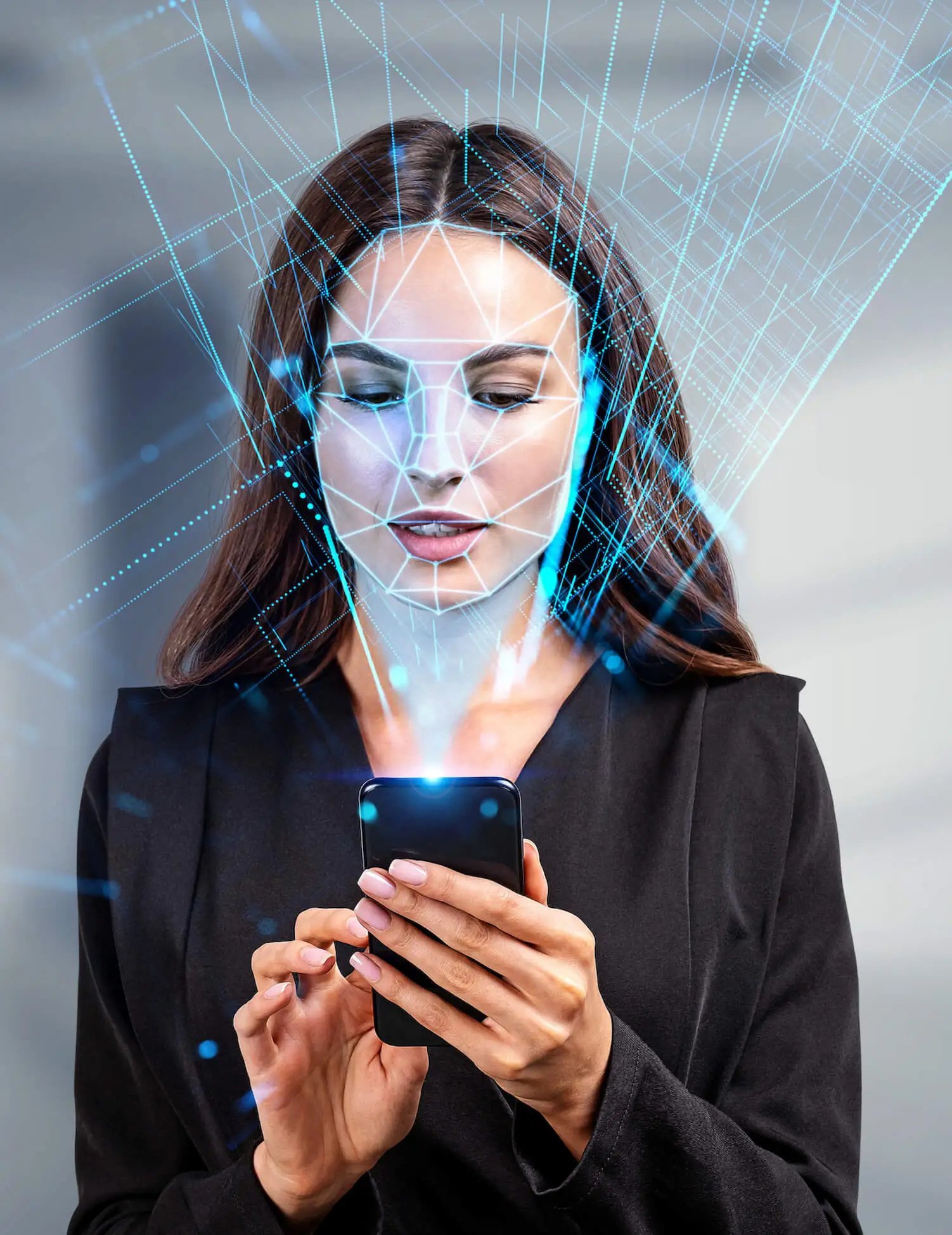Hey there, tech enthusiasts! If you've been keeping up with the latest trends in artificial intelligence, you might have heard about face rating AI. This cutting-edge technology is revolutionizing the way we perceive and interact with facial data. Imagine a world where your face can be analyzed, rated, and even matched with specific traits or preferences. Sounds futuristic, right? Well, it's happening right now, and it's about to change everything from social media to security systems.
Face rating AI isn't just some buzzword thrown around by tech companies. It's a powerful tool that uses advanced algorithms to analyze facial features and assign ratings or scores based on various parameters. Whether it's for beauty standards, security checks, or even marketing strategies, this tech is quickly becoming indispensable. But with great power comes great responsibility, and we're here to break down everything you need to know about this fascinating innovation.
Now, before we dive deep into the nitty-gritty of face rating AI, let's address the elephant in the room: privacy concerns. As with any AI-driven technology, there are ethical considerations to keep in mind. But don't worry—we'll cover all that and more. By the end of this article, you'll have a comprehensive understanding of how face rating AI works, its applications, and the potential impact it could have on our daily lives. Let's get started!
What Exactly is Face Rating AI?
Face rating AI refers to a type of artificial intelligence designed to analyze human faces and assign ratings based on specific criteria. These criteria can range from attractiveness and age estimation to emotion detection and even personality traits. The technology leverages machine learning algorithms and deep neural networks to process vast amounts of facial data and provide accurate results.
In layman's terms, think of it as a super-smart system that can "read" your face like a book. It doesn't just stop at recognizing who you are; it goes deeper by evaluating various aspects of your appearance. This makes it incredibly versatile and applicable across multiple industries, from entertainment to healthcare.
But how does it actually work? Let's break it down:
- Facial Detection: The system first identifies and isolates faces within an image or video.
- Feature Extraction: It then extracts key features such as eyes, nose, mouth, and facial structure.
- Data Analysis: Using pre-trained models, the AI analyzes these features to determine ratings or predictions.
- Output Generation: Finally, it generates a score or label based on the defined criteria.
Why is Face Rating AI Gaining Popularity?
There's a reason why face rating AI is making waves in the tech world. Its ability to provide actionable insights from facial data has opened up countless possibilities. Here are a few reasons why this technology is gaining traction:
First off, it's incredibly efficient. Traditional methods of analyzing facial features often require manual input and can be time-consuming. Face rating AI automates this process, allowing businesses and researchers to obtain results in a fraction of the time. Plus, its accuracy continues to improve as the algorithms learn from more data.
Another factor is its wide range of applications. From helping marketers target specific demographics to aiding law enforcement in identifying suspects, face rating AI has something to offer for almost every industry. And let's not forget the entertainment sector, where it's being used to enhance user experiences in apps and games.
Applications of Face Rating AI
Now that we've established why face rating AI is so popular, let's take a closer look at some of its practical applications:
- Marketing and Advertising: Companies can use face rating AI to tailor their campaigns to specific audiences based on demographic data derived from facial analysis.
- Security Systems: Enhanced security measures can be implemented by integrating face rating AI into surveillance systems to detect suspicious behavior or identify individuals.
- Healthcare: In the medical field, this technology can assist in diagnosing conditions related to facial abnormalities or genetic disorders.
- Entertainment: Social media platforms and gaming companies are leveraging face rating AI to create interactive and personalized content for users.
The Science Behind Face Rating AI
So, how exactly does face rating AI achieve such remarkable results? The answer lies in the science behind it. At its core, this technology relies on machine learning and computer vision techniques to process and interpret facial data. Let's delve into the technical aspects:
Machine learning algorithms are trained on large datasets containing millions of facial images. These datasets are carefully curated to ensure diversity and accuracy. As the algorithms learn from the data, they develop the ability to recognize patterns and make predictions. For instance, they can identify correlations between certain facial features and specific traits or emotions.
Computer vision plays a crucial role in enabling the AI to "see" and understand images. It involves techniques such as image segmentation, feature extraction, and object recognition. By combining these methods, face rating AI can accurately analyze facial features and generate meaningful insights.
Challenges in Developing Face Rating AI
While face rating AI holds immense potential, its development isn't without challenges. One of the primary hurdles is ensuring the accuracy and fairness of the algorithms. Bias in training data can lead to skewed results, which is why it's essential to use diverse and representative datasets.
Another challenge is addressing privacy concerns. Many people are wary of their facial data being used without consent. To mitigate this, developers must implement robust security measures and adhere to ethical guidelines. Transparency in how the data is collected, stored, and utilized is key to building trust with users.
Impact on Society
The rise of face rating AI has significant implications for society as a whole. On one hand, it offers numerous benefits, such as improved security, personalized experiences, and enhanced medical diagnostics. However, it also raises important ethical questions that need to be addressed.
One of the biggest concerns is the potential for misuse. If not properly regulated, face rating AI could be exploited for discriminatory practices or invasive surveillance. It's crucial for governments and organizations to establish clear policies and frameworks to govern its use.
Education and awareness are also vital in ensuring that society understands the capabilities and limitations of this technology. By fostering an informed dialogue, we can work towards creating a future where face rating AI is used responsibly and ethically.
Ethical Considerations
When it comes to face rating AI, ethics cannot be overlooked. The technology has the power to influence decisions and shape perceptions, which is why it's essential to approach it with caution. Here are a few ethical considerations to keep in mind:
- Consent: Users should have the right to know when their facial data is being collected and how it will be used.
- Privacy: Adequate measures must be taken to protect sensitive information and prevent unauthorized access.
- Transparency: Developers should be transparent about the algorithms and data sources used in face rating AI systems.
Future Trends in Face Rating AI
As we look ahead, the future of face rating AI seems promising. Advancements in technology and increased adoption across various industries are driving innovation in this field. Here are a few trends to watch out for:
Firstly, we can expect to see more sophisticated algorithms capable of analyzing complex facial features with greater accuracy. This will enable even more precise ratings and predictions. Additionally, the integration of face rating AI with other emerging technologies, such as augmented reality and virtual reality, could lead to groundbreaking applications.
Another trend is the growing emphasis on ethical AI. As awareness around the potential risks of AI increases, there will be a greater focus on developing systems that prioritize fairness, transparency, and accountability. This will ensure that face rating AI continues to evolve in a responsible and sustainable manner.
Emerging Technologies
Face rating AI is not developing in isolation. It's part of a broader landscape of emerging technologies that are shaping the future. Some of these technologies include:
- Blockchain: By incorporating blockchain, face rating AI systems can enhance data security and ensure transparency in transactions.
- Quantum Computing: The advent of quantum computing could significantly boost the processing power of AI algorithms, enabling faster and more accurate analyses.
- Internet of Things (IoT): Integration with IoT devices could expand the reach of face rating AI, allowing it to be used in smart homes, cities, and workplaces.
How to Get Started with Face Rating AI
If you're intrigued by the potential of face rating AI and want to explore it further, here's how you can get started:
First, familiarize yourself with the basics of machine learning and computer vision. There are plenty of online resources and courses available that can help you build a solid foundation. Once you have a good understanding of the underlying concepts, you can start experimenting with open-source libraries and tools designed for facial analysis.
Additionally, consider collaborating with experts in the field. Joining online communities or attending industry events can provide valuable insights and networking opportunities. Remember, the key to success in this field is continuous learning and staying up-to-date with the latest advancements.
Tools and Resources
Here are some tools and resources to help you get started with face rating AI:
- OpenCV: A powerful open-source library for computer vision tasks.
- TensorFlow: A popular machine learning framework that supports facial recognition and analysis.
- Face API: Pre-built APIs offered by companies like Microsoft and Amazon for easy integration into applications.
Conclusion
Face rating AI is undoubtedly one of the most exciting developments in the world of artificial intelligence. Its ability to analyze and rate facial features has opened up a plethora of opportunities across various industries. However, with great power comes great responsibility. As we continue to explore the possibilities of this technology, it's crucial to approach it with caution and prioritize ethical considerations.
So, whether you're a tech enthusiast, a business owner, or simply someone interested in the future of AI, face rating AI is definitely worth keeping an eye on. We encourage you to share your thoughts and experiences in the comments below. And don't forget to check out our other articles for more insights into the world of technology!
Table of Contents
- What Exactly is Face Rating AI?
- Why is Face Rating AI Gaining Popularity?
- Applications of Face Rating AI
- The Science Behind Face Rating AI
- Challenges in Developing Face Rating AI
- Impact on Society
- Ethical Considerations
- Future Trends in Face Rating AI
- Emerging Technologies
- How to Get Started with Face Rating AI



Detail Author:
- Name : Rene Gusikowski
- Username : raynor.lazaro
- Email : adell94@yahoo.com
- Birthdate : 1992-08-20
- Address : 4626 Hintz Prairie Suite 584 Champlinland, HI 19036-5815
- Phone : 818.564.6191
- Company : Heathcote-VonRueden
- Job : Physics Teacher
- Bio : Illum odio optio quia pariatur magni molestias dolor. Neque ex animi consequatur optio harum nostrum facere. Et qui harum consequatur quam. Nulla commodi eum nam quo explicabo enim.
Socials
linkedin:
- url : https://linkedin.com/in/mike_harvey
- username : mike_harvey
- bio : Velit animi culpa sapiente corporis voluptas est.
- followers : 3462
- following : 1189
tiktok:
- url : https://tiktok.com/@mike_official
- username : mike_official
- bio : Rerum animi occaecati ea dolores exercitationem.
- followers : 3975
- following : 2834
twitter:
- url : https://twitter.com/mike.harvey
- username : mike.harvey
- bio : Aliquid quo est et ut. Natus aut non est odit voluptatem. Voluptatum dolorem deserunt quis quos libero hic repudiandae. Et qui qui voluptatem fugit.
- followers : 6575
- following : 560
instagram:
- url : https://instagram.com/mike.harvey
- username : mike.harvey
- bio : Quia qui ipsa et aperiam aut dignissimos maiores voluptatem. Facere sunt aliquid quod et.
- followers : 298
- following : 2666